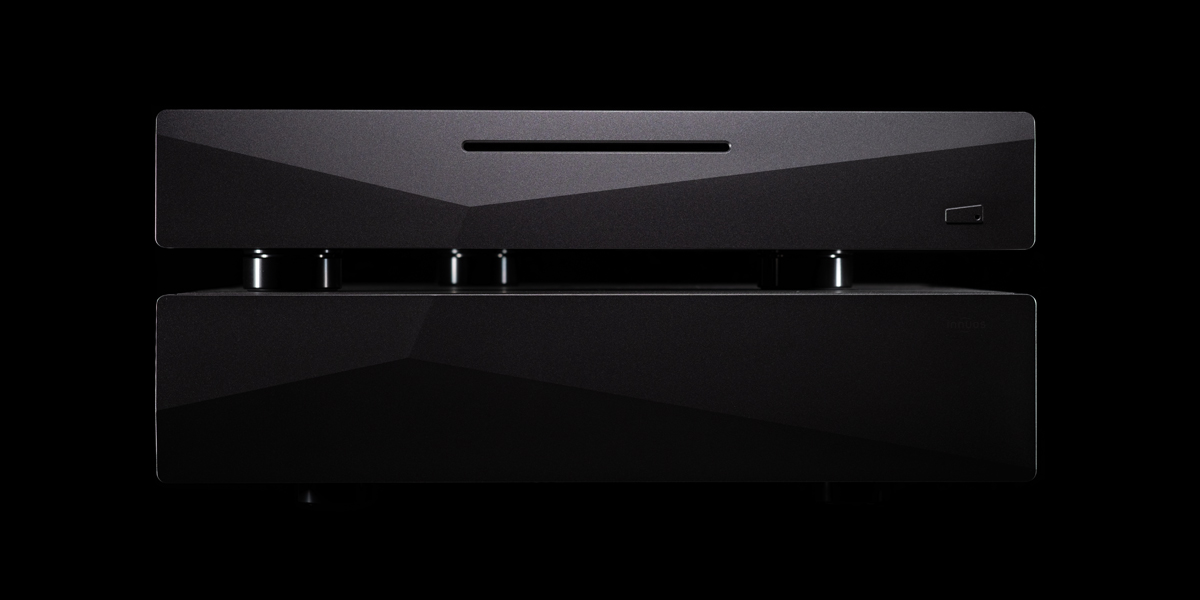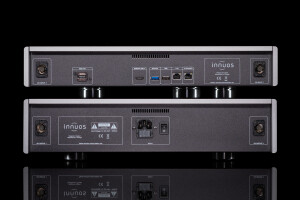Top tier is the place where audio manufacturers go all in with their entire know-how, resources and effort to land the very best stuff they can possibly make. Just as its name would imply, Innuos Statement is said to be such a product and now is the time to find out whether it acts accordingly.
Introduction
It doesn’t really matter whether a newcomer business introduces a costly statement product first to then move down the ladder or vice versa. At some point every designer team wants to show what they are truly capable of, however as a reporter for a living I’m in no rush to go there right away. I like to start small and work my way up, just to map how a given company scales its hardware and understand better what happens along this evolutionary road, though the reality often has it otherwise.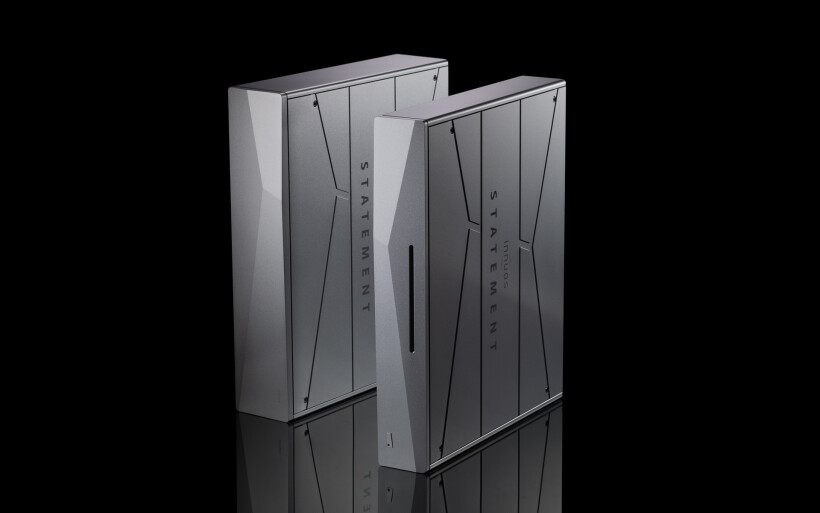 Although the routine as described hasn’t yet failed me and I incorporate it into my work whenever possible, once in a while it’s turned upside down and I have to keep up regardless. That’s my track record with the Portuguese company Innuos. Upon first contact about a year ago I wanted to start small as per usual, but back then their second best ZENith Mk3 was the only loaner available. It turned out flavoured differently than my reference transport though alike-tiered, which already was plenty considering the nearly twice as costly latter. The second Innuos product dispatched my way several months later wasn’t a server but USB reclocker, that quickly was mapped as the best of its kind I’ve heard.
Although the routine as described hasn’t yet failed me and I incorporate it into my work whenever possible, once in a while it’s turned upside down and I have to keep up regardless. That’s my track record with the Portuguese company Innuos. Upon first contact about a year ago I wanted to start small as per usual, but back then their second best ZENith Mk3 was the only loaner available. It turned out flavoured differently than my reference transport though alike-tiered, which already was plenty considering the nearly twice as costly latter. The second Innuos product dispatched my way several months later wasn’t a server but USB reclocker, that quickly was mapped as the best of its kind I’ve heard.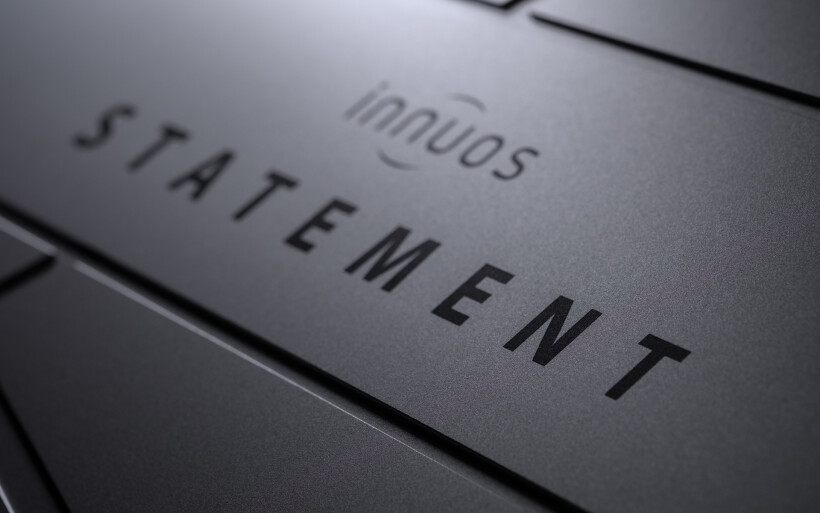 After these highly insightful adventures it was high time to stick to the usual plan and finally move to the most affordable stuff, but Innuos’ rep Mandy De Castro had a different idea. She introduced me to their Statement model that’s built upon the ZENith Mk3 platform and, among other things, internally infused with PhoenixUSB reclocking circuitry. Due to my familiarity with both these fine specimens refusal simply wasn’t an option, and that’s how the Innuos Statement story came to be. Enjoy!
After these highly insightful adventures it was high time to stick to the usual plan and finally move to the most affordable stuff, but Innuos’ rep Mandy De Castro had a different idea. She introduced me to their Statement model that’s built upon the ZENith Mk3 platform and, among other things, internally infused with PhoenixUSB reclocking circuitry. Due to my familiarity with both these fine specimens refusal simply wasn’t an option, and that’s how the Innuos Statement story came to be. Enjoy!
Build
The Innuos Statement loaner arrived inside a double cardboard with foamy inserts that locked in place two its hefty residents each wrapped in a cloth bag. A standard mains throwaway and two short umbilical DC cords were the only accessories found in there, but paying customers would also get a handy manual with all key functionalities and connections nicely explained.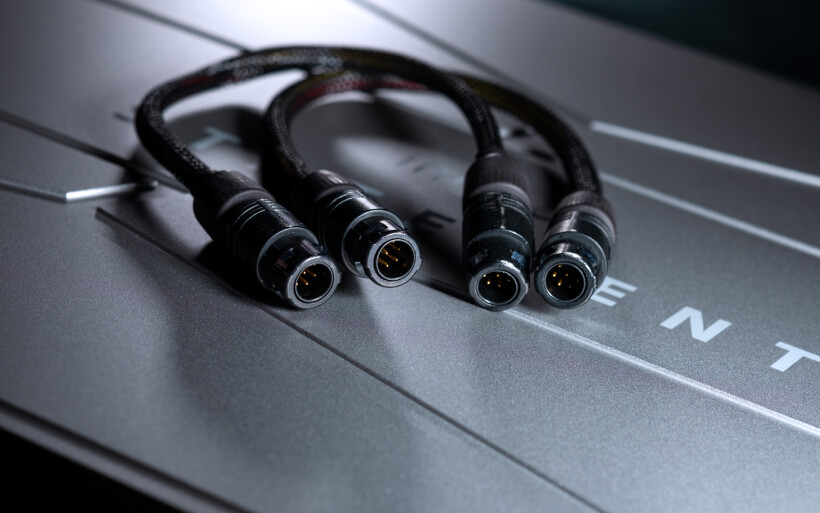 This report’s Innuos is an audio server designed with sound quality set as its top priority, which is why it distributes digital music exclusively via a wired LAN network and says nay to noisy streaming over WLAN. It features an internal SSD storage (1/2/4/8TB) just as my daily platform does, but is powerful enough to operate as a Roon Core/Bridge device and its in-built optical drive allows one to easily rip silver discs. Although on utilities the Statement doesn’t go beyond its more affordable siblings even one bit, it’s still generous enough to sit a cut above products by fidata, Lumin, Auralic and many more.
This report’s Innuos is an audio server designed with sound quality set as its top priority, which is why it distributes digital music exclusively via a wired LAN network and says nay to noisy streaming over WLAN. It features an internal SSD storage (1/2/4/8TB) just as my daily platform does, but is powerful enough to operate as a Roon Core/Bridge device and its in-built optical drive allows one to easily rip silver discs. Although on utilities the Statement doesn’t go beyond its more affordable siblings even one bit, it’s still generous enough to sit a cut above products by fidata, Lumin, Auralic and many more.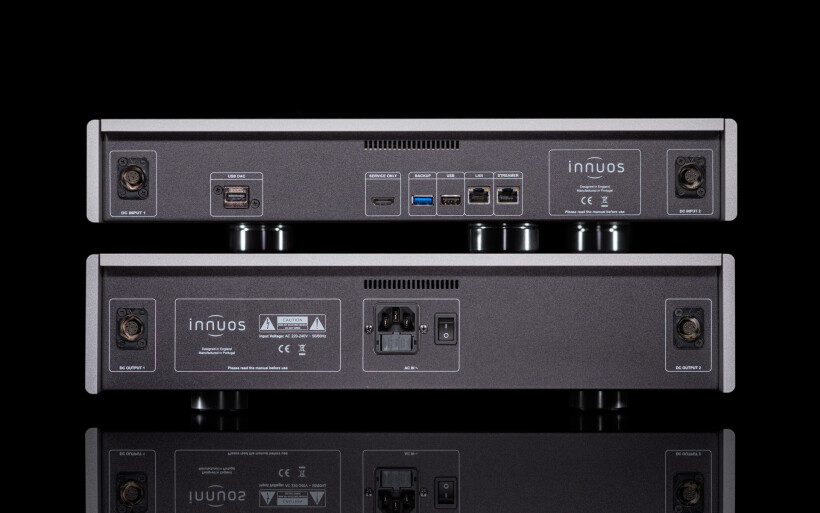 The Statement sets itself apart from the rest of its family by being the only full-sized Innuos that features a streamer and linear power supply for it inside their own enclosures. Upon stacking both these boxes the entire structure measures (W x D x H) 420 x 352 x 190mm and weighs 21.6kg in total, so is big and heavy. Four differently angled planes spread across two its sandblasted aluminium foreheads connect tastefully to net modern utilitarian visual, by my standards very attractive. The server box houses a CD slot and the secondary on/off switch with a multi-colored LED embedded on its front, whereas the beefier PSU cab that by default goes underneath is clean. The Statement gets by perfectly fine without any extra buttons, dials and displays, and their lack in fact contributes to its sharply dressed exterior. If silver color doesn’t float your boat, the product is also available all black at no extra cost.
The Statement sets itself apart from the rest of its family by being the only full-sized Innuos that features a streamer and linear power supply for it inside their own enclosures. Upon stacking both these boxes the entire structure measures (W x D x H) 420 x 352 x 190mm and weighs 21.6kg in total, so is big and heavy. Four differently angled planes spread across two its sandblasted aluminium foreheads connect tastefully to net modern utilitarian visual, by my standards very attractive. The server box houses a CD slot and the secondary on/off switch with a multi-colored LED embedded on its front, whereas the beefier PSU cab that by default goes underneath is clean. The Statement gets by perfectly fine without any extra buttons, dials and displays, and their lack in fact contributes to its sharply dressed exterior. If silver color doesn’t float your boat, the product is also available all black at no extra cost.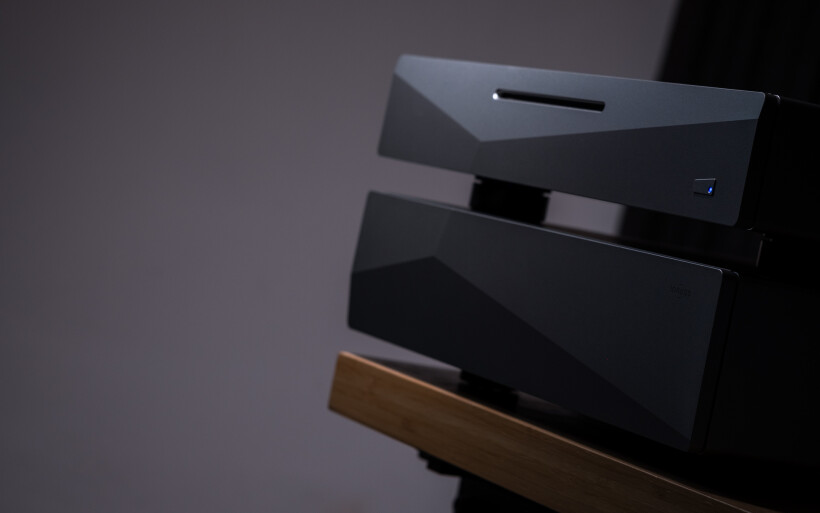 The Innuos ZENith Mk3’s steel hood had to be heavily perforated for extra heat dissipation, but the Statement’s massive aluminium cheeks and bonnets work as efficient heatsinks that require no holes. Its PSU’s rear houses one Neutrik’s ORP8F 8-pin DC out on each its side plus a IEC inlet with a fuse compartment and the main on/off switch in the middle. The nameplate next in line lists design and assembly by hand respectively in England and Portugal. The server’s business end also features the same DC locking inlets, whereas sockets in-between them are a HDMI service input, two USB type A ports (blue 3.0 for backup/external storage, black 2.0 for digital audio out), and two RJ45s to use the Statement either as a network all-in-one product for a DAC, or as a storage for a standalone streamer of choice. The USB2.0 out baptized ‘USB DAC’ a bit to the right is purposely separated from the group and quite special, but more about it in a bit.
The Innuos ZENith Mk3’s steel hood had to be heavily perforated for extra heat dissipation, but the Statement’s massive aluminium cheeks and bonnets work as efficient heatsinks that require no holes. Its PSU’s rear houses one Neutrik’s ORP8F 8-pin DC out on each its side plus a IEC inlet with a fuse compartment and the main on/off switch in the middle. The nameplate next in line lists design and assembly by hand respectively in England and Portugal. The server’s business end also features the same DC locking inlets, whereas sockets in-between them are a HDMI service input, two USB type A ports (blue 3.0 for backup/external storage, black 2.0 for digital audio out), and two RJ45s to use the Statement either as a network all-in-one product for a DAC, or as a storage for a standalone streamer of choice. The USB2.0 out baptized ‘USB DAC’ a bit to the right is purposely separated from the group and quite special, but more about it in a bit.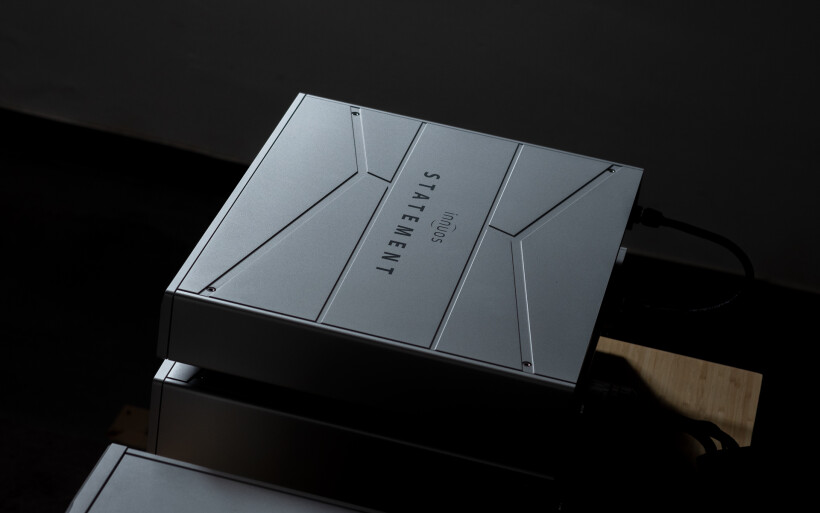 Three POM pucks with three rubber hemispheres each are installed asymmetrically on the server’s underbelly to support its internal parts most prone to microphonics, whereas the power supply enclosure gets four beefier footers with rubber O-rings and most likely large inner springs. The former decupler type we’ve already seen in i.e. ZENith Mk3 and the latter is used in the same manufacturer’s Phoenix USB sorter, but more importantly both are soft solutions with some springy action involved. The Statement’s enclosures one on top of the other have their DC sockets vertically aligned so 2x 0.3m locking umbilical cables included in the set connect them easily, but longer cuts are available for those who wish to put the two boxes on separate shelfs or side by side.
Three POM pucks with three rubber hemispheres each are installed asymmetrically on the server’s underbelly to support its internal parts most prone to microphonics, whereas the power supply enclosure gets four beefier footers with rubber O-rings and most likely large inner springs. The former decupler type we’ve already seen in i.e. ZENith Mk3 and the latter is used in the same manufacturer’s Phoenix USB sorter, but more importantly both are soft solutions with some springy action involved. The Statement’s enclosures one on top of the other have their DC sockets vertically aligned so 2x 0.3m locking umbilical cables included in the set connect them easily, but longer cuts are available for those who wish to put the two boxes on separate shelfs or side by side. The Statement’s upper box is a heavily customized desktop computer that runs on a customized BIOS and extensively stripped Linux OS cleverly named InnuOS, which incorporates LMS (Logitech Media Server) as music library. Inside we see a rack subject to the anti-vibration treatment with TEAC’s optical drive on its top and Intel’s SSD drive below. HDDs are off the menu due to moving parts and far slower access times. A Mini-ITX motherboard by SuperMicro has Intel’s N4200 CPU embedded, 8GB of RAM, optimized clocks and its sources of EMI physically removed. All listed components are quiet low-voltage types sufficiently powerful for server duties. Key aspects that differentiate the Statement from its more affordable siblings are its separated power supply and two Phoenix modules for USB and Ethernet ports inside the main enclosure.
The Statement’s upper box is a heavily customized desktop computer that runs on a customized BIOS and extensively stripped Linux OS cleverly named InnuOS, which incorporates LMS (Logitech Media Server) as music library. Inside we see a rack subject to the anti-vibration treatment with TEAC’s optical drive on its top and Intel’s SSD drive below. HDDs are off the menu due to moving parts and far slower access times. A Mini-ITX motherboard by SuperMicro has Intel’s N4200 CPU embedded, 8GB of RAM, optimized clocks and its sources of EMI physically removed. All listed components are quiet low-voltage types sufficiently powerful for server duties. Key aspects that differentiate the Statement from its more affordable siblings are its separated power supply and two Phoenix modules for USB and Ethernet ports inside the main enclosure.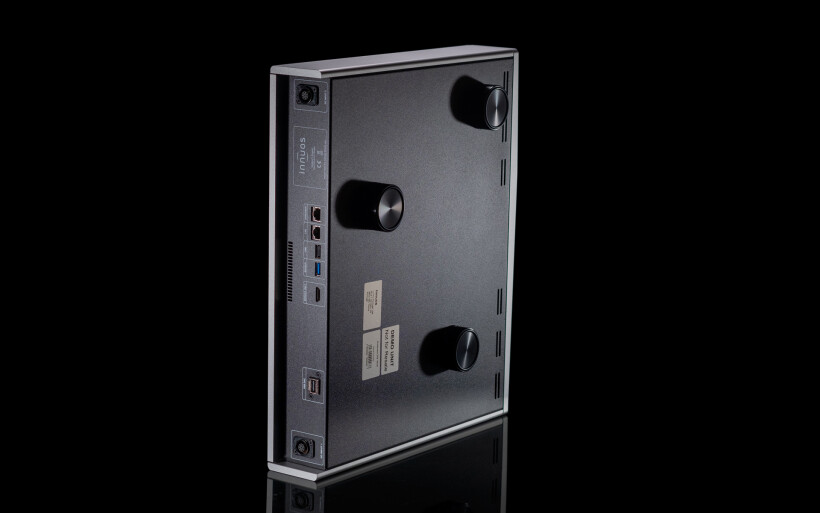 The PhoenixUSB platform was designed to trim noise from a connected source’s 5V line, then inject its own pristine 5V and via its OCXO oscillator reclock the USB bus itself but leave audio data intact. This clock natively operates at 24MHz speed and is housed in a well-shielded compartment about 20mm away from the USB I/O chipset to reduce jitter. The entire circuit relies on its own voltage filtering and regulation blocks that provide two rails; one exclusively for the OCXO and the other for everything else. The USB chip doesn’t feature switching regulators so it needs these voltages. The PhoenixUSB board handles only the Statement’s ‘USB DAC’ output, which explains why that’s the one to use. I have no idea how exactly this module handles RJ45s and that’s the company’s secret for now, but a daughter board just next to these ports hides yet another larger than life OCXO clock.
The PhoenixUSB platform was designed to trim noise from a connected source’s 5V line, then inject its own pristine 5V and via its OCXO oscillator reclock the USB bus itself but leave audio data intact. This clock natively operates at 24MHz speed and is housed in a well-shielded compartment about 20mm away from the USB I/O chipset to reduce jitter. The entire circuit relies on its own voltage filtering and regulation blocks that provide two rails; one exclusively for the OCXO and the other for everything else. The USB chip doesn’t feature switching regulators so it needs these voltages. The PhoenixUSB board handles only the Statement’s ‘USB DAC’ output, which explains why that’s the one to use. I have no idea how exactly this module handles RJ45s and that’s the company’s secret for now, but a daughter board just next to these ports hides yet another larger than life OCXO clock.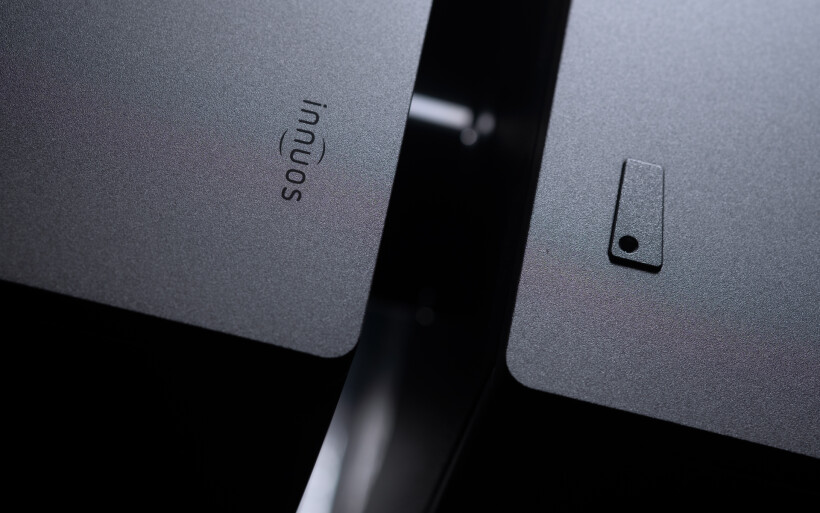 The Statement’s PSU designed by Dr. Sean Jacobs (of Custom HiFi Cables Ltd.) starts with a IEC inlet that connects to a medical-grade mains filter with a voltage selector just next to it. A neighboring massive toroidal transformer custom-made for Innuos feeds four double rectifier boards that provide eight linear DC rails in total; two for the USB circuit, three for the motherboard and one for each Ethernet’s reclocker, CPU and SSD. DC passed via umbilical cords to the upper box, and from there two its regulation boards located near both aluminium sides take over. If you’re wondering why to bother with a separate box for a power supply, sensitive electronic parts enjoy noise-free environment and enthusiasts get to reap audible benefits. Interference between these components, mechanical resonances and pollution from mains are culprits well-known for introducing harshness and grain to effectively truncate sound quality.
The Statement’s PSU designed by Dr. Sean Jacobs (of Custom HiFi Cables Ltd.) starts with a IEC inlet that connects to a medical-grade mains filter with a voltage selector just next to it. A neighboring massive toroidal transformer custom-made for Innuos feeds four double rectifier boards that provide eight linear DC rails in total; two for the USB circuit, three for the motherboard and one for each Ethernet’s reclocker, CPU and SSD. DC passed via umbilical cords to the upper box, and from there two its regulation boards located near both aluminium sides take over. If you’re wondering why to bother with a separate box for a power supply, sensitive electronic parts enjoy noise-free environment and enthusiasts get to reap audible benefits. Interference between these components, mechanical resonances and pollution from mains are culprits well-known for introducing harshness and grain to effectively truncate sound quality.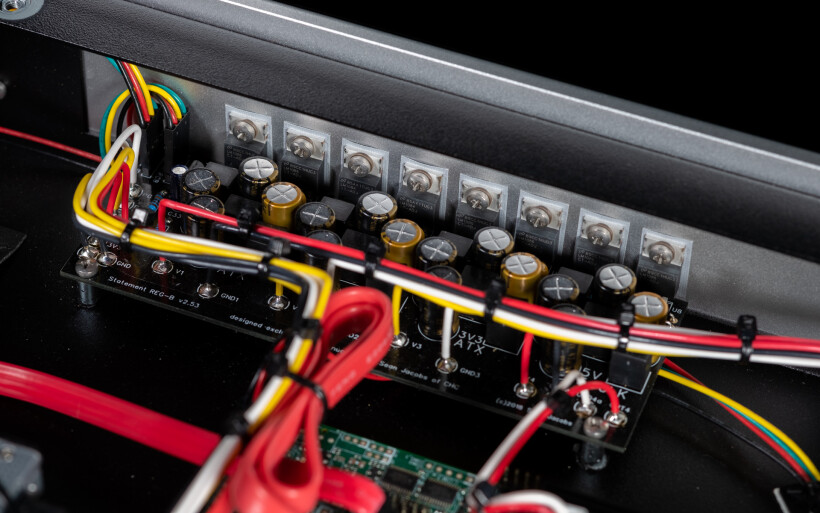 The Statement connected to a DAC via USB is a server/streamer machine that relies on LMS and is controlled via iPeng 9/OrangeSqueeze apps on iOS/Android devices respectively. It’ll work as a UPnP server for any other compliant streamer, best connected to its squeaky clean RJ45 labeled ‘streamer out’ instead of a router/switch. Then there’s the option to set it as a Roon Core or Bridge connected to a different brain, or the full Core/Bridge package. The Statement doesn’t do UPnP rendering, but it integrates Tidal, Qobuz, Spotify, Spotify Connect, BBC iPLayer Radio, Radio Paradise and TuneIn Radio Directories. It’ll work without access to the www, though it’s good to grant it the event of failure so Innuos’ tech staff can remotely access, troubleshoot and potentially rescue the situation from their HQ. Although my network needs have always been very limited, I was positively surprised how fast, responsive and stable this report’s loaner was, and how easy and intuitive to operate in general. In short, it provided the same licked user experience as its sibling several months ago.
The Statement connected to a DAC via USB is a server/streamer machine that relies on LMS and is controlled via iPeng 9/OrangeSqueeze apps on iOS/Android devices respectively. It’ll work as a UPnP server for any other compliant streamer, best connected to its squeaky clean RJ45 labeled ‘streamer out’ instead of a router/switch. Then there’s the option to set it as a Roon Core or Bridge connected to a different brain, or the full Core/Bridge package. The Statement doesn’t do UPnP rendering, but it integrates Tidal, Qobuz, Spotify, Spotify Connect, BBC iPLayer Radio, Radio Paradise and TuneIn Radio Directories. It’ll work without access to the www, though it’s good to grant it the event of failure so Innuos’ tech staff can remotely access, troubleshoot and potentially rescue the situation from their HQ. Although my network needs have always been very limited, I was positively surprised how fast, responsive and stable this report’s loaner was, and how easy and intuitive to operate in general. In short, it provided the same licked user experience as its sibling several months ago.
Sound
Either the Innuos Statement or my fidata HFAS1-S10U handled storage/transport, then a LampizatOr Pacific DAC (KR Audio T-100/Living Voice 300B + KR Audio 5U4G Ltd. Ed.) passed signal to a Trilogy 915R/995R set that connected via a Boenicke Audio S3 speaker cable to either sound|kaos Vox 3afw monitors or Boenicke W11 SE+ floorstanders. Interconnects used were Boenicke Audio IC3 CG and XLRs I proudly DIY-ed. All key hardware was powered by Boenicke Audio Power Gate distributor box plus its three captive M2 cords and two LessLoss C-MARCs. The USB chain included the full iFi audio stack; a micro iUSB3.0, nano iGalvanic3.0, three Mercury3.0 USB cables in-between plus one 9V iPower. One set of external LessLoss Firewall for Loudspeakers modules complimented both speaker sets, while a Fidelizer EtherStream was in-between my Linksys WRT160N router and fidata server. A GigaWatt PC-3 SE EVO+ power conditioner fronted by its own LC-3 EVO cable fed PSUs for a reclocker, router and network switch.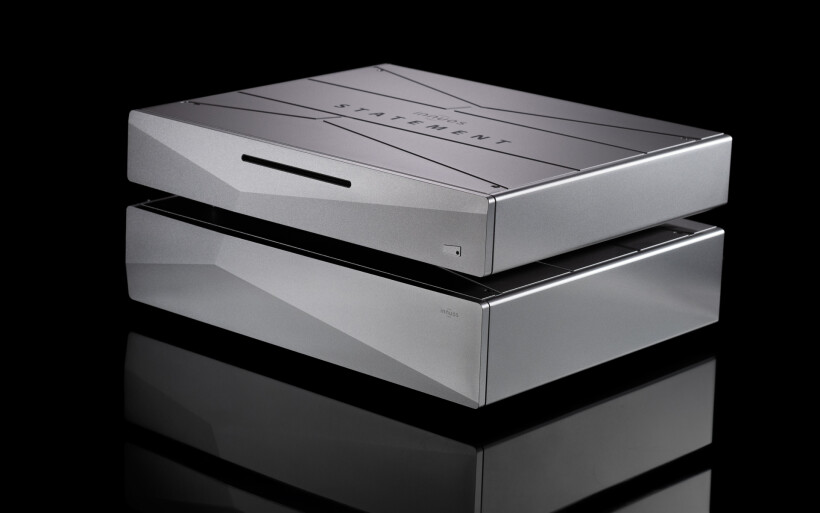 Prior to going any further let me encourage you to take a look at the Innuos ZENith Mk3 story published here as most its sound descriptions apply to its dearer sibling. Although the Innuos Statement allowed for multiple usage scenarios, one in particular seemed the most practical and realistic. Many customers would buy this product as an all-in-one network machine very much similar to my HFAS1-S10U. That’s why, instead of turning one device as an audiophile NAS for the other, it made sense to load the same music on their in-built SSD drives and compare them as standalone platforms. My work thus narrowed down mainly to shifts between them as many times as it was necessary to get a proper aural fix. During these comparisons I didn’t rely on any streaming services, so I had to move some music from my daily driver’s storage to the Statement’s own digital warehouse.
Prior to going any further let me encourage you to take a look at the Innuos ZENith Mk3 story published here as most its sound descriptions apply to its dearer sibling. Although the Innuos Statement allowed for multiple usage scenarios, one in particular seemed the most practical and realistic. Many customers would buy this product as an all-in-one network machine very much similar to my HFAS1-S10U. That’s why, instead of turning one device as an audiophile NAS for the other, it made sense to load the same music on their in-built SSD drives and compare them as standalone platforms. My work thus narrowed down mainly to shifts between them as many times as it was necessary to get a proper aural fix. During these comparisons I didn’t rely on any streaming services, so I had to move some music from my daily driver’s storage to the Statement’s own digital warehouse.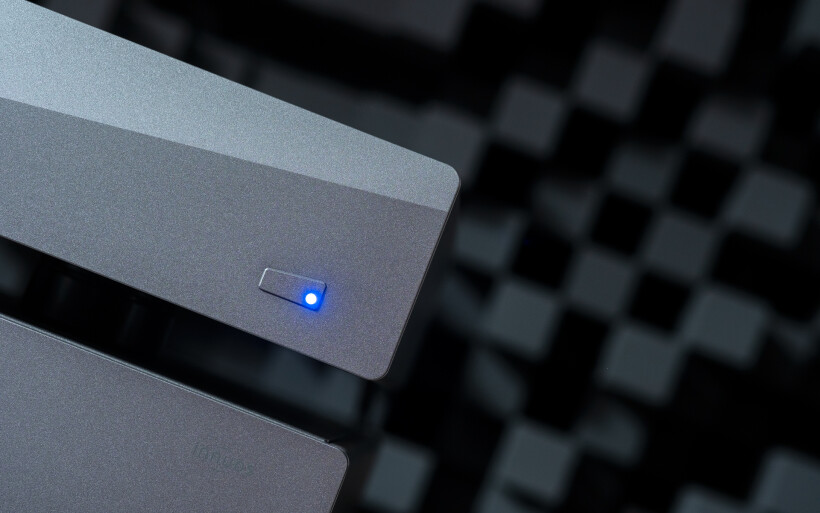 The iPeng 9/Lumin’s software to control respectively the Statement/fidata didn’t matter. These apps provide only handy UI via a smartphone/tablet so don’t partake in audio data exchange and consequently have no impact on sonics. At least I haven’t yet heard any sound quality shifts between several control apps I’ve tried with my fidata. During its fight with the ZENith Mk3 one of each a USB and Ethernet cable had to be reconnected after every platform change, but Fidelizer’s EtherStream network switch simplified the entire process. Both the Statement and fidata were constantly connected to it via two alike RJ45 throwaways, so one quick convenient USB cable swap was all I had to do. At first iFi’s full USB chain was on standby so I could map how both transports fared with no enhancers, with the exception of just one Mercury USB leash that connected them with my DAC.
The iPeng 9/Lumin’s software to control respectively the Statement/fidata didn’t matter. These apps provide only handy UI via a smartphone/tablet so don’t partake in audio data exchange and consequently have no impact on sonics. At least I haven’t yet heard any sound quality shifts between several control apps I’ve tried with my fidata. During its fight with the ZENith Mk3 one of each a USB and Ethernet cable had to be reconnected after every platform change, but Fidelizer’s EtherStream network switch simplified the entire process. Both the Statement and fidata were constantly connected to it via two alike RJ45 throwaways, so one quick convenient USB cable swap was all I had to do. At first iFi’s full USB chain was on standby so I could map how both transports fared with no enhancers, with the exception of just one Mercury USB leash that connected them with my DAC.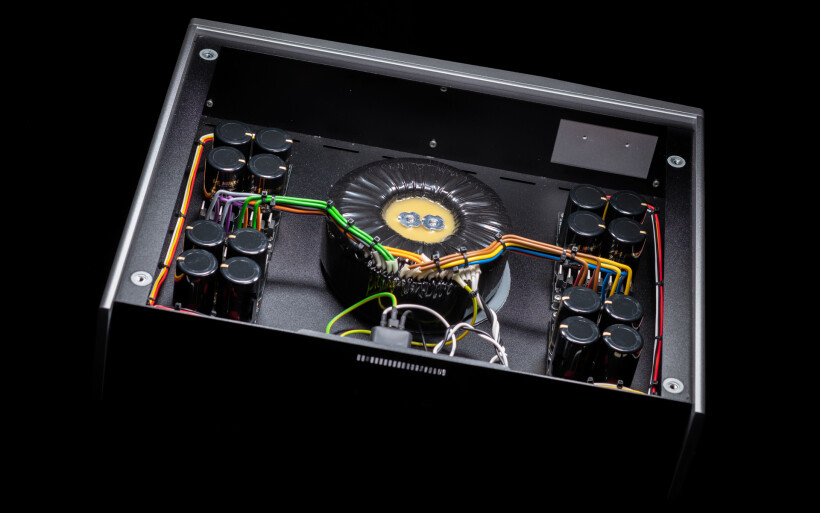 To recap, this site’s rare ‘Victor’ award at the end of the fidata HFAS1-S10U review wasn’t a coincidence. The Japanese game changer outperformed my Asus laptop on every count pronouncedly enough to pursue it later on, and also allowed me to understand the importance of digital data prior to its route to a DAC. Hardware downstream gets to work on music born inside transports, which makes them just as meaningful and essential as any other major component. If signal they make is matte, lifeless, chiseled, grainy and unnatural, later on it won’t be fixed but transformed and amplified, thus the better it is from the start, the better sound a listener gets in return. In this context the HFAS1-S10U granted me access to the very much analog alike sonic profile I deemed as not possible with digital machines; texturally rich, saturated and calm, hence geared towards sensuality, vividness, charm, and generously organic overall aroma. This particularly fetching bias kept imperfections at bay instead of magnifying them, but also didn’t pursue ultimate resolution, agility and balance. In other words, the fidata’s personality was as expressive and big on tone as it was enjoyable to listen to, but also colored in the grand scheme of things.
To recap, this site’s rare ‘Victor’ award at the end of the fidata HFAS1-S10U review wasn’t a coincidence. The Japanese game changer outperformed my Asus laptop on every count pronouncedly enough to pursue it later on, and also allowed me to understand the importance of digital data prior to its route to a DAC. Hardware downstream gets to work on music born inside transports, which makes them just as meaningful and essential as any other major component. If signal they make is matte, lifeless, chiseled, grainy and unnatural, later on it won’t be fixed but transformed and amplified, thus the better it is from the start, the better sound a listener gets in return. In this context the HFAS1-S10U granted me access to the very much analog alike sonic profile I deemed as not possible with digital machines; texturally rich, saturated and calm, hence geared towards sensuality, vividness, charm, and generously organic overall aroma. This particularly fetching bias kept imperfections at bay instead of magnifying them, but also didn’t pursue ultimate resolution, agility and balance. In other words, the fidata’s personality was as expressive and big on tone as it was enjoyable to listen to, but also colored in the grand scheme of things. Top shelf digital transports excel on musical easygoingness, textural complexity, smoothness and insight delivered naturally from within their black backdrop. These core features effectively discard tension, harshness, artificial tint, blur and itchiness, to in turn flesh out that particular analog alike aural liveliness, refinement and universal seasoning many aficionados are sensitive to. It’s also the direct result of solid engineering related to power supply, OS optimizations and mechanical grounding. Listed measures not only are critical for audio performance, but they also set apart audiophile digital transports from their mainstream equivalents. On these counts the ZENith Mk3 was no less potent than my twice as costly reference platform, which already says a lot about what the team Innuos managed to achieve, but their equally sorted sonic backbone didn’t result in alike flavor. Quite the contrary in fact.
Top shelf digital transports excel on musical easygoingness, textural complexity, smoothness and insight delivered naturally from within their black backdrop. These core features effectively discard tension, harshness, artificial tint, blur and itchiness, to in turn flesh out that particular analog alike aural liveliness, refinement and universal seasoning many aficionados are sensitive to. It’s also the direct result of solid engineering related to power supply, OS optimizations and mechanical grounding. Listed measures not only are critical for audio performance, but they also set apart audiophile digital transports from their mainstream equivalents. On these counts the ZENith Mk3 was no less potent than my twice as costly reference platform, which already says a lot about what the team Innuos managed to achieve, but their equally sorted sonic backbone didn’t result in alike flavor. Quite the contrary in fact.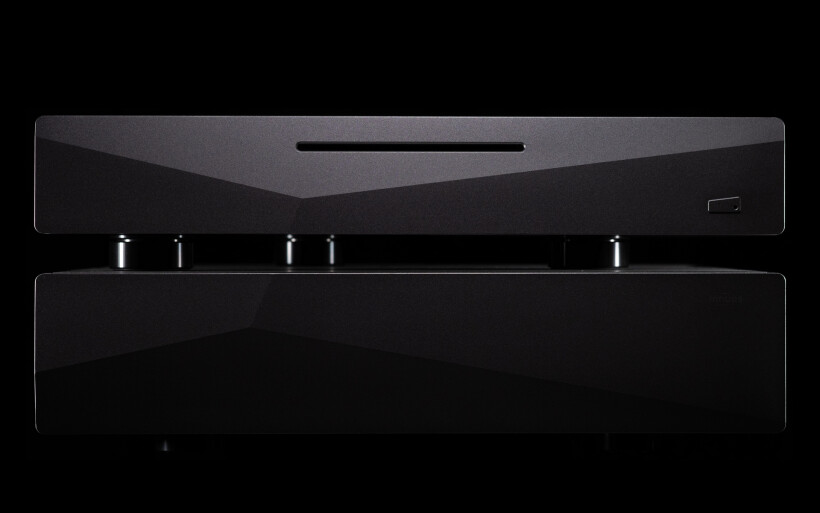 My daily transport was mellow, rich, suave and somewhat sweet versus the ZENith Mk3’s more mechanical, powerful, fit and speedier approach. The former was calm, generously saturated, a tad distant, darker, and had its tonal center of gravity lower. The latter sounded feistier, more invigorating, direct, contoured, shinier, snappier and it projected sound sources outlined more firmly and a bit closer. I took these transitions as major mood swings, but neither the fidata was blurry, stuffy, withdrawn and sluggish, nor the Innuos sounded hot, itchy, opaque, thin and nervous to in effect portray ambient gloomy tracks on my playlist as abnormally happy. Although both contestants were inherently very different indeed, on maturity and cohesion they scored equally high notes. In effect I very quickly stopped thinking about a rather substantial price gap between them.
My daily transport was mellow, rich, suave and somewhat sweet versus the ZENith Mk3’s more mechanical, powerful, fit and speedier approach. The former was calm, generously saturated, a tad distant, darker, and had its tonal center of gravity lower. The latter sounded feistier, more invigorating, direct, contoured, shinier, snappier and it projected sound sources outlined more firmly and a bit closer. I took these transitions as major mood swings, but neither the fidata was blurry, stuffy, withdrawn and sluggish, nor the Innuos sounded hot, itchy, opaque, thin and nervous to in effect portray ambient gloomy tracks on my playlist as abnormally happy. Although both contestants were inherently very different indeed, on maturity and cohesion they scored equally high notes. In effect I very quickly stopped thinking about a rather substantial price gap between them. Although the ZENith Mk3 and fidata were alike-tiered performers to my ears, the latter’s more organic, expressive, sweeter, earthlier and deeper aroma I fancied a bit more, but this was of no major importance. The Innuos’ upper hand on agility, clarity, openness, adrenaline and snap led to quite the evenhanded blow exchange versus its nearly twice as costly opponent. This was the key takeaway of that story, and if you’re now wondering why today’s tale up to this point is its shortened copy’n’paste version, rest assured that journalistic laziness had nothing to do with it. The Statement’s and ZENith Mk3’s very similar core voice is hardly any surprise, but if now I had to pick between this report’s loaner and my fidata, I’d go with the former without any hesitation and I’m certain that most seasoned enthusiasts would follow suit. Please read on to learn why.
Although the ZENith Mk3 and fidata were alike-tiered performers to my ears, the latter’s more organic, expressive, sweeter, earthlier and deeper aroma I fancied a bit more, but this was of no major importance. The Innuos’ upper hand on agility, clarity, openness, adrenaline and snap led to quite the evenhanded blow exchange versus its nearly twice as costly opponent. This was the key takeaway of that story, and if you’re now wondering why today’s tale up to this point is its shortened copy’n’paste version, rest assured that journalistic laziness had nothing to do with it. The Statement’s and ZENith Mk3’s very similar core voice is hardly any surprise, but if now I had to pick between this report’s loaner and my fidata, I’d go with the former without any hesitation and I’m certain that most seasoned enthusiasts would follow suit. Please read on to learn why.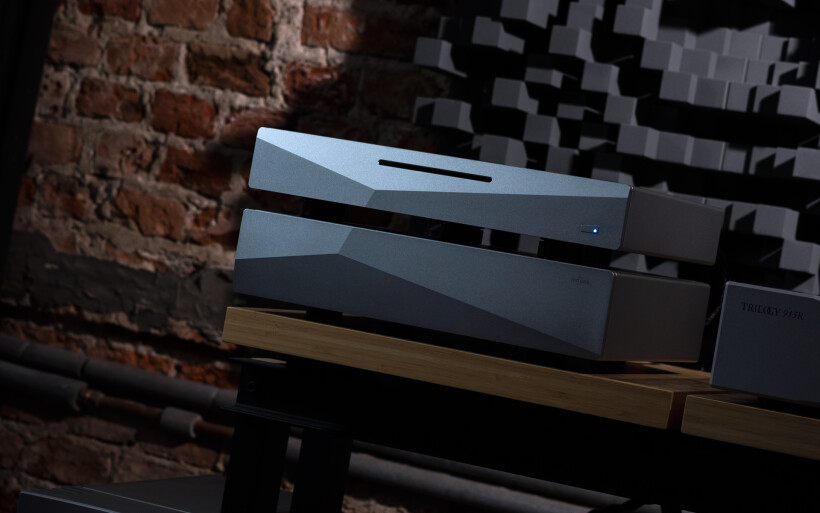 Although the Statement put up against the fidata was instantly mapped as the more agile, open, expansive and propulsive of the two, it didn’t sound mechanical at all, but far more important was my own transport’s behavior in comparison. Instead of being the expressive, rich, calm and dense type as described in the ZENith Mk3 article, the HFAS1-S10U was now lazier, less clear if not a bit veiled, thicker, rounder and more shaky on the bottom. The fight no longer involved two distinctive though equally competitive performers but different classes and one positioned clearly higher. The Innuos’ top dog struck me as more balanced versus the rounder and mellower thus more situational fidata, but for the first time I’ve heard how biased the latter was and how significantly it affected components downstream in my setup.
Although the Statement put up against the fidata was instantly mapped as the more agile, open, expansive and propulsive of the two, it didn’t sound mechanical at all, but far more important was my own transport’s behavior in comparison. Instead of being the expressive, rich, calm and dense type as described in the ZENith Mk3 article, the HFAS1-S10U was now lazier, less clear if not a bit veiled, thicker, rounder and more shaky on the bottom. The fight no longer involved two distinctive though equally competitive performers but different classes and one positioned clearly higher. The Innuos’ top dog struck me as more balanced versus the rounder and mellower thus more situational fidata, but for the first time I’ve heard how biased the latter was and how significantly it affected components downstream in my setup.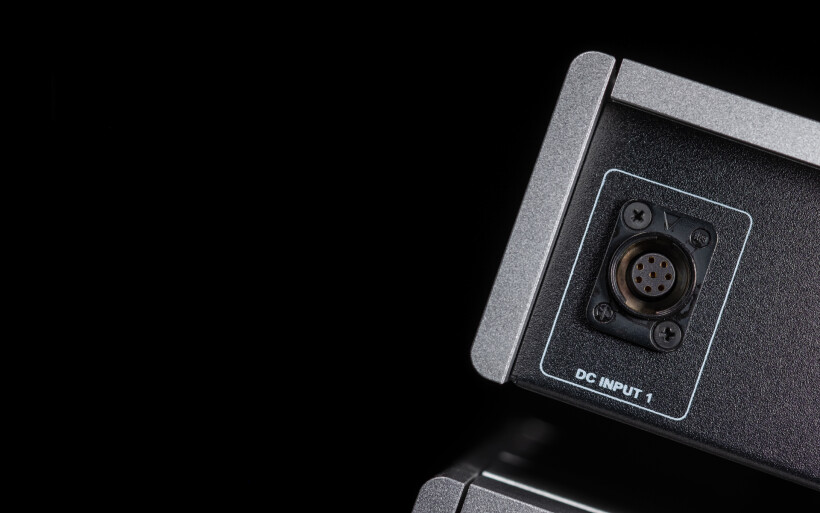 Audio reviewers aren’t immune to being blindsided. They get used to their hardware just as everyone else and at times so much so that they miss the big picture. In this context the Statement swiftly revealed extra power my Boenicke W11 SE+ floorstanders had in them and how much more agile, lively and engaging they were able to perform in my room. This story’s transport also made these Swiss boxes less problematic in there and that’s something neither my DAC, line stage or amps could do this effectively. Or perhaps they could, but the fidata was the showstopper.
Audio reviewers aren’t immune to being blindsided. They get used to their hardware just as everyone else and at times so much so that they miss the big picture. In this context the Statement swiftly revealed extra power my Boenicke W11 SE+ floorstanders had in them and how much more agile, lively and engaging they were able to perform in my room. This story’s transport also made these Swiss boxes less problematic in there and that’s something neither my DAC, line stage or amps could do this effectively. Or perhaps they could, but the fidata was the showstopper.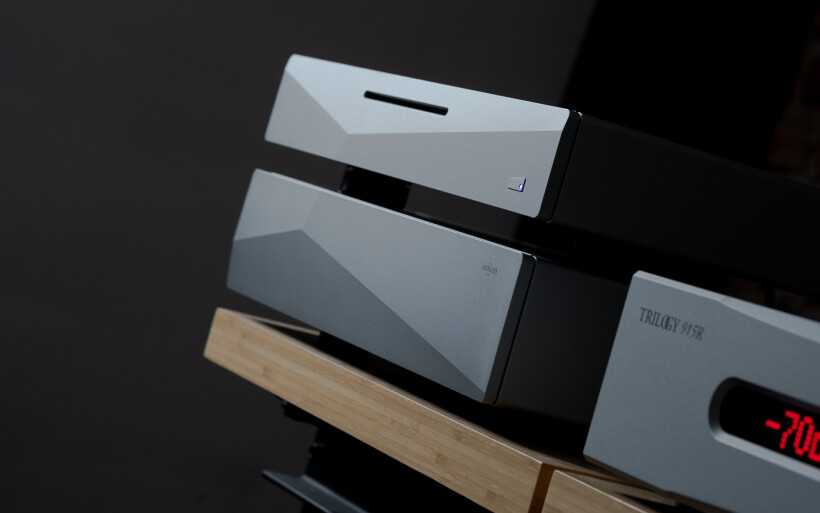 Having the ZENith Mk3’s performance in mind I also imagined that my daily driver’s highs should be more sublime, smoother and weightier versus the more lit-up airier Innuos, but they weren’t and that caught me off guard. For the first time since receiving it, the HFAS1-S10U emerged as the more itchy and zealous specimen, but after a while it became clear why. In spite of the Portuguese flagship’s tonal balance positioned a fair bit higher, its quieter and darker background also implied more thorough internal silencing work that had to shave off more noise and inject extra smoothness, differentiation and weight upstairs. Such traits are no news in case of machines voiced alike my daily server/streamer deck, however the more prone to zing Innuos’ greater potency in this specific regard was new and the next level play in my book. Bravo!
Having the ZENith Mk3’s performance in mind I also imagined that my daily driver’s highs should be more sublime, smoother and weightier versus the more lit-up airier Innuos, but they weren’t and that caught me off guard. For the first time since receiving it, the HFAS1-S10U emerged as the more itchy and zealous specimen, but after a while it became clear why. In spite of the Portuguese flagship’s tonal balance positioned a fair bit higher, its quieter and darker background also implied more thorough internal silencing work that had to shave off more noise and inject extra smoothness, differentiation and weight upstairs. Such traits are no news in case of machines voiced alike my daily server/streamer deck, however the more prone to zing Innuos’ greater potency in this specific regard was new and the next level play in my book. Bravo!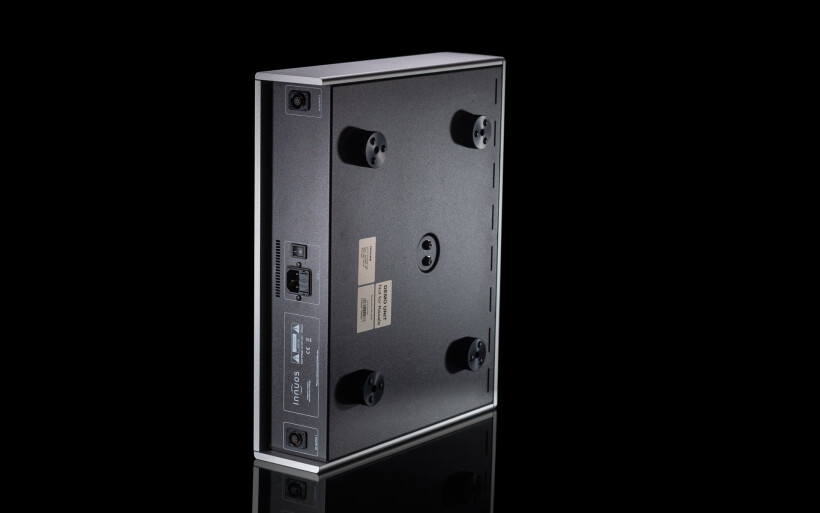 The fidata shined on tracks built upon unamplified instruments and vocals, and the ZENith Mk3 had the upper hand on artificial bass lines, guitar quickness and raw power. It was fair to expect the alike profiled Statement’s fondness towards the same repertoire, but in practice it wasn’t fussy at all, and its equal fit for every genre on my playlist was yet another surprise. For example, Eivør Pálsdóttir’s calm romantic “Verð Mín” song features high-pitched vocal line that can easily become excessively sharp. My fidata portrayed this track properly picturesque and dreamy just as it should, whereas the Statement also managed to preserve its original character yet make it more clear, soothing, smoother and a touch slower. Eivor’s voice additionally infused with these traits effectively became more believable, balanced and I strongly think that also presented more accordingly to the artist’s primary goals.
The fidata shined on tracks built upon unamplified instruments and vocals, and the ZENith Mk3 had the upper hand on artificial bass lines, guitar quickness and raw power. It was fair to expect the alike profiled Statement’s fondness towards the same repertoire, but in practice it wasn’t fussy at all, and its equal fit for every genre on my playlist was yet another surprise. For example, Eivør Pálsdóttir’s calm romantic “Verð Mín” song features high-pitched vocal line that can easily become excessively sharp. My fidata portrayed this track properly picturesque and dreamy just as it should, whereas the Statement also managed to preserve its original character yet make it more clear, soothing, smoother and a touch slower. Eivor’s voice additionally infused with these traits effectively became more believable, balanced and I strongly think that also presented more accordingly to the artist’s primary goals. The same singer’s “Trøllabundin” track features a single vocal line isolated among vast hauntingly dark naturally open landscape filled with calm rhythmic drums. The fidata’s character is the reason why this recording made its way to the mandatory music set I’ve been using to evaluate audio products. Still, versus the Statement it had this specific track wobbly on bass, a bit more grainy and with Eivor’s voice distant, somewhat veiled and surrounded by less oxygenated space. The Innuos once more was faithful to the core character of the song yet kept bass blows in check, pushed more air my way, had finer more clear outlines and its overall execution was more meticulous, so not different but quality wise tiered higher. On music where shove, immediacy, accuracy, timing and spatial might were key, the Statement just as the ZENith Mk3 was clearly wilder and dynamically more gifted than the fidata.
The same singer’s “Trøllabundin” track features a single vocal line isolated among vast hauntingly dark naturally open landscape filled with calm rhythmic drums. The fidata’s character is the reason why this recording made its way to the mandatory music set I’ve been using to evaluate audio products. Still, versus the Statement it had this specific track wobbly on bass, a bit more grainy and with Eivor’s voice distant, somewhat veiled and surrounded by less oxygenated space. The Innuos once more was faithful to the core character of the song yet kept bass blows in check, pushed more air my way, had finer more clear outlines and its overall execution was more meticulous, so not different but quality wise tiered higher. On music where shove, immediacy, accuracy, timing and spatial might were key, the Statement just as the ZENith Mk3 was clearly wilder and dynamically more gifted than the fidata.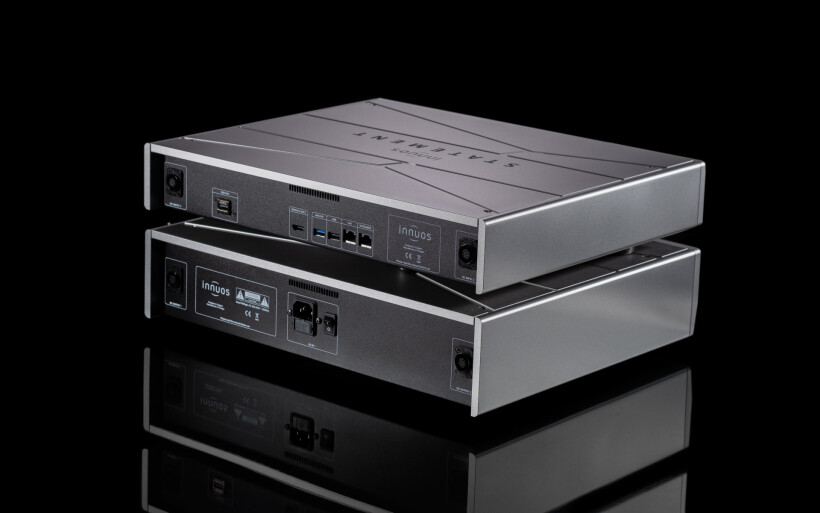 The more shifts I had under my belt, the more the Statement impressed me with its instantly adjustable handbrake to match repertoire that demanded more suave, delicate and resonant approach. The zippy ZENith Mk3 didn’t have it and my mellow fidata ran out of steam where raw horsepower was mandatory, so in this context the Innuos acted as if it combined and amplified their best features. But the sensation of sonic correctness, fine balance, insight and equal performance regardless of music type with it wasn’t comparable to any other such product I’m familiar with. My reference deck came out of this fight even more system specific than it was before. Without doubt it would do quite the synergistic work in setups quick, ethereal and texturally frugal, but to my ears the more universal Statement has what it takes to perform very well in every rig I can think of. Although the full iFi stack audibly morphed some of the fidata’s fat into muscle tissue, even past this extensive liposuction and adrenaline injection its sparring partner was still a fair bit ahead.
The more shifts I had under my belt, the more the Statement impressed me with its instantly adjustable handbrake to match repertoire that demanded more suave, delicate and resonant approach. The zippy ZENith Mk3 didn’t have it and my mellow fidata ran out of steam where raw horsepower was mandatory, so in this context the Innuos acted as if it combined and amplified their best features. But the sensation of sonic correctness, fine balance, insight and equal performance regardless of music type with it wasn’t comparable to any other such product I’m familiar with. My reference deck came out of this fight even more system specific than it was before. Without doubt it would do quite the synergistic work in setups quick, ethereal and texturally frugal, but to my ears the more universal Statement has what it takes to perform very well in every rig I can think of. Although the full iFi stack audibly morphed some of the fidata’s fat into muscle tissue, even past this extensive liposuction and adrenaline injection its sparring partner was still a fair bit ahead.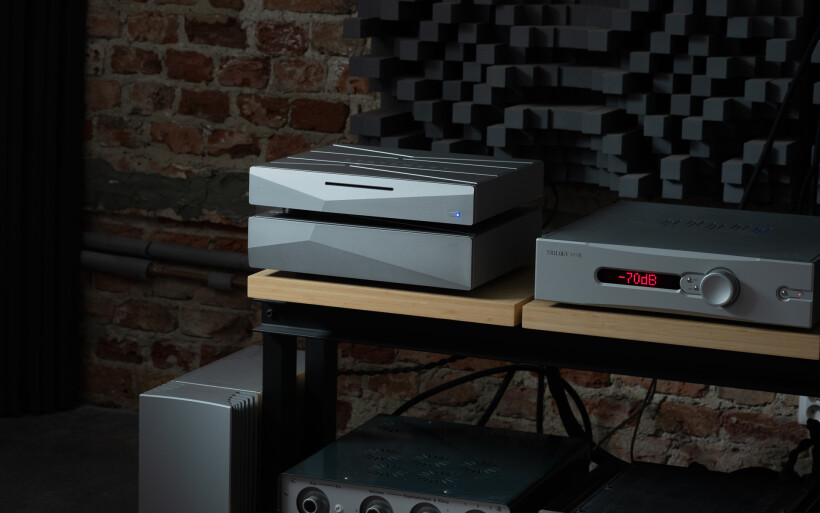 Just as the Innuos ZENith Mk3 before it, the Statement had to be exploited as a Roon Core device put up against the team Portugal’s own software. Its USB output disengaged to make room for a regular RJ45 cable plus my DAC’s own Roon Bridge module instead of its Amanero USB input were the two major variables in this scenario. Differences between the InnuOS and Roon’s engine list the former’s software optimizations and memory management to allocate four gigs of RAM exclusively for playback purposes and effectively avoid any data readout from today’s internal SSD. The ZENith Mk3 with its stock software in use sounded more fluently, sported darker backdrop, was a touch heftier and less mechanical, whereas the Statement pushed this exact envelope even further to render Roon’s own engine as more matte, grainier and dynamically constrained, so audibly inferior versus the InnuOS plus iPeng 9 control app. With the ZENith Mk3 I’d most likely use Roon due to its convenience and reasonably small sonic penalty, but in case of the Statement I’d rely on its own software.
Just as the Innuos ZENith Mk3 before it, the Statement had to be exploited as a Roon Core device put up against the team Portugal’s own software. Its USB output disengaged to make room for a regular RJ45 cable plus my DAC’s own Roon Bridge module instead of its Amanero USB input were the two major variables in this scenario. Differences between the InnuOS and Roon’s engine list the former’s software optimizations and memory management to allocate four gigs of RAM exclusively for playback purposes and effectively avoid any data readout from today’s internal SSD. The ZENith Mk3 with its stock software in use sounded more fluently, sported darker backdrop, was a touch heftier and less mechanical, whereas the Statement pushed this exact envelope even further to render Roon’s own engine as more matte, grainier and dynamically constrained, so audibly inferior versus the InnuOS plus iPeng 9 control app. With the ZENith Mk3 I’d most likely use Roon due to its convenience and reasonably small sonic penalty, but in case of the Statement I’d rely on its own software.
Summary
Several months back I labeled the Innuos ZENith Mk3 as the most accomplished of its kind I came across, and a fine example of how to turn inaccessible geeky hardware for file playback into an easy to use versatile audiophile package that’s also dressed nicely. Innuos Statement based on the same core platform unsurprisingly fits that profile equally well, but it managed to impress me substantially more where it matters the most, which is why this story is about to be finished in red.
Innuos Statement ticks all functional checkboxes without any buttons or displays, and its utilitarian bling-free visual scores as high in my roster as its put-togetherness. One can easily tell it’s not a toy, neither it feels nor sounds like one. Fully embedded Roon platform, broad compliance with other devices, hassle-free operation and ripping drive form quite the arsenal of utilities, whereas keen execution of all tasks without hiccups, nearly instant readiness and rock-solid overall stability imply thorough engineering work that went into this product. It’s a hulk with appetite for space, but considering the purpose of its beefier box that’s hardly a con.
Although Innuos Statement might seem as just its sibling ZENith Mk3 boosted with too few extras to charge nearly three times as much, it’s priced rather accurately and quality of these additives is what truly matters. Innuos PhoenixUSB inside its own box sells for €2’499 and stands tall as the most effective USB sorter I’m aware of, so today’s internal augmentation with this highly effective circuit plus its Ethernet version is easy math. Machined aluminium casework and linear power supply designed by a specialist don’t sell for pennies either. But most importantly, all these costly measures turned out to be meaningful enough for the Statement’s sonic performance that it easily surpassed my reference transport, hence the award below. ‘Til next time!
Associated Equipment:
- Amplifier: Trilogy 995R
- DAC: LampizatOr Pacific (KR Audio T-100 / Living Voice 300B + KR Audio 5U4G Ltd. Ed.)
- Speakers: Boenicke Audio W11 SE+
- Transport: fidata HFAS1-S10U
- Preamplifier: Trilogy 915R
- Speaker cables: Boenicke Audio S3, LessLoss C-MARC
- Speaker signal conditioning: LessLoss Firewall for Loudspeakers
- Interconnects: Boenicke Audio IC3 CG
- Power components: Gigawatt PC-3 SE EVO+/LC-3 EVO, LessLoss C-MARC, Boenicke Audio Power Gate
- USB components: iFi audio iGalvanic3.0, iFi audio micro iUSB3.0, 3x iFi audio Mercury3.0, iPower 9V
- Rack: Franc Audio Accesories Wood Block Rack
- Network: Fidelizer EtherStream, Linksys WRT160N
- Music: NativeDSD
Retail prices of reviewed components in EU (excl. tax):
- Innuos Statement 1/2/4/8TB: €11’000/11’500/12’100/13,600
Manufacturer: Innuos


